Fujian, a province on the southeastern coast of China, is known for its unique Fujian Tulou, breathtaking landscapes, and rich history and culture. Before embarking on your journey, here are 10+ essential travel tips and FAQs to ensure a memorable and smooth experience.
Five highly recommended destinations in Fujian are: (1) Fujian Tulou - These are extraordinary earthen buildings unique to Fujian, reflecting the traditional communal living of the Hakka people. (2) Wuyi Mountain - Renowned for its natural beauty, Wuyishan offers excellent hiking opportunities, especially to Tianyou Peak. Don't miss the tranquil bamboo rafting experience on the Nine Bend Stream. (3) Quanzhou - Once a major port for maritime trade, Quanzhou is rich in history and cultural diversity. (4) Xiamen - Known for its charming coastal scenery and vibrant city life. Explore Gulangyu Island, and the bustling Zhongshan Street for a diversified experience. (5) Xiapu Mudflat - Recognized as China's most beautiful mudflat, Xiapu offers stunning coastal scenery, especially during sunrise and sunset. It's a paradise for photographers and nature lovers.
To plan an unforgettable journey to Fujian, familiarize yourself with popular attractions in Fujian, transportation between these sites, local popular activities, unique cuisine, and the rich historical culture before departure. Understanding these aspects of Fujian will ensure a delightful journey, allowing you to fully enjoy the World Heritage tour of Fujian.
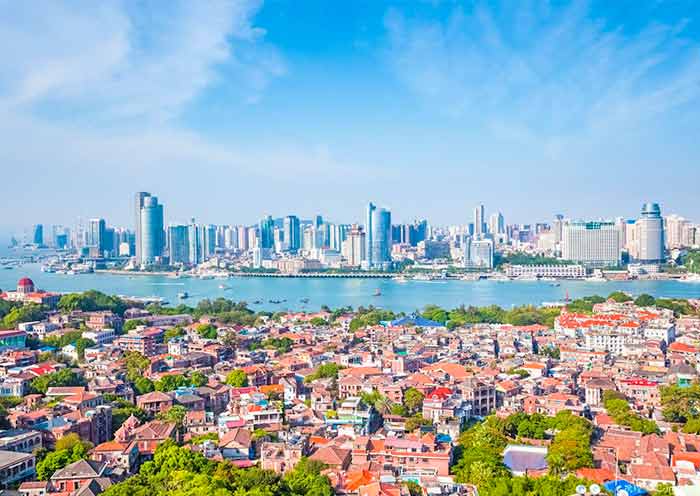
"Excellent Tour, best experience"
"A unique experience despite a difficult context thanks
to an experience team of organisers"
1. What is Xiamen famous for?+
Cultural Melting Pot Xiamen's history as a trading port has led to a mix of different cultural influences, including European architecture on Gulangyu Island, which is a UNESCO World Heritage Site. This cultural diversity is evident in the city's art, architecture, and cuisine.
Scenic Coastlines and Natural Beauty The city offers beautiful beaches and scenic coastlines. The island geography of Xiamen itself, with its pleasant climate, makes it a relaxing getaway from the bustle of mainland China.
Rich Historical Heritage From the ancient Nanputuo Temple to the historic Hulishan Fortress, Xiamen has a wealth of historical sites that tell the story of China's maritime history and cultural development.
Lively Urban Atmosphere Despite its historical charm, Xiamen is also a modern, vibrant city. Zhongshan Road, for example, is a bustling pedestrian street with shops, street food, and a lively atmosphere.
Culinary Delights The city is famous for its delicious Fujian cuisine, which is one of the eight great traditions of Chinese cuisine. It's particularly well-known for its seafood dishes and various snacks.
Gateway to Fujian Province Xiamen can be a starting point for exploring the wider Fujian province, discovering the amazing world cultural heritage site of Fujian Tulou, the majestic landscapes of Mt.Wuyishan (world natural and cultural heritage site), the historic city of Quanzhou (world cultural heritage site), or the mesmerizing beauty of Xiapu (photographer's heaven).
2. What are the must-visit attractions in Xiamen?+
Gulangyu Island, the Hakka Tulou, Nanputuo Temple, Xiamen University, Zhongshan Road, Eighth Seafood Market, Huandao Road, Jimei Village.
3. When is the best time to visit Xiamen?+
The most favorable periods to visit Xiamen are during the spring (March to May) and autumn (September to November) seasons. These seasons boast mild and delightful weather, with average temperatures ranging from 15 to 25 °C (59 to 77 °F). The skies tend to be clear and sunny, and rainfall is minimal.
Do note Winter is also recommended for tourists. There would be a detailed breakdown later in this article. Read on to find out if winter is the right time for you to visit Xiamen.
4. How do I get to Gulangyu Island from Xiamen?+
You can take a ferry from Xiamen to Gulangyu Island. The ferry ride is a short and scenic journey.
5. What is the typical duration of a Xiamen tour?+
A typical Xiamen tour can range from 2 to 5 days, allowing you to explore the city's main attractions and nearby destinations like Fujian Tulou or Mt.Wuyishan.
6. What is the local cuisine in Xiamen, and where can I try it?+
Xiamen is famous for its seafood and local snacks such as Shacha Noodle (沙茶面), Oyster Omelet (海蛎煎), and Peanut Sweet Soup (花生汤). You can try them at local markets, street food stalls, and restaurants near Zhongshan Road and the Eighth Seafood Market.
7. Where to stay in Xiamen?+
You have options like the downtown area of Siming District, offering the most diverse hotel choices in Xiamen, or stay overnight at Gulangyu Island for a different vibe.
8. What to do on Gulangyu Island?+
Explore the Architecture: Wander around and admire the unique mix of architectural styles from around the world. The island has been designated a UNESCO World Cultural Heritage site, known as World Architecture Exhibition.
Shuzhuang Garden: Visit the beautifully landscaped Shuzhuang Garden, initially a private villa, but now open to the public.
Sunlight Rock: Climb to the highest point on the island, Sunlight Rock, for panoramic views of Xiamen and the South China Sea.
Piano Museum: Check out the Piano Museum in the Shuzhuang Garden, which showcases a collection of antique pianos from around the world. Gulangyu is known as the "Island of Music".
Beaches: Relax on one of the island’s small beaches. Although they may not be ideal for swimming, they are perfect for a peaceful stroll or a quiet moment by the sea.
Local Cuisine: Sample local snacks and dishes such as seafood, oyster omelet, and the unique peanut soup.
9. How many world heritages in Fujian?+
Fujian Tulou: A series of large, multi-story earthen buildings constructed for defensive purposes by the Hakka people. They were inscribed as World Heritage Sites in 2008.
Mount Wuyi: Recognized for its exceptional biodiversity and significance in the development of Neo-Confucianism, it was inscribed in 1999 for both its cultural and natural values.
Quanzhou: Emporium of the World in Song-Yuan China. This site was inscribed on the UNESCO World Heritage List in 2021. It comprises 22 sites in the city of Quanzhou that reflect its history as a maritime emporium during the Song and Yuan dynasties, illustrating the city's intercultural dialogue.
Gulangyu: a Historic International Settlement. This island off the coast of Xiamen was inscribed as a UNESCO World Heritage site in 2017. It is known for its blend of different architectural styles and for being an important port of international trade in Fujian Province in the 19th and early 20th centuries.
10. How to plan a Fujian tour?+
A typical Fujian tour takes around 5 days. Start your trip in Xiamen , and spend 1-2 days exploring the city. Then, allocate 1-2 days to visit the Fujian Tulou and another 2 days to explore Mt. Wuyishan . If you are passionate about photography, consider spending 2-4 days in Xiapu. If you are more interested in culture and history, plan 1-2 days to visit Quanzhou.
1. What is Fujian Tulou? Where is Fujian Tulou?+
Fujian Tulou refers to a type of traditional Chinese residential building found in the Fujian province of China. These Tulou buildings are large, fortified structures made of earth, wood, and other materials. They were primarily built by the Hakka people, a group of people in southern China known for their unique culture and architecture.
Fujian Tulou can be found in various counties and villages across the Fujian province. They are typically located in Nanjing County and Yongding County which are rural areas, nestled amidst the scenic landscapes of mountains, rivers, and fields. Some well-known Tulou clusters include Chengqi Building, Tianluokeng Tulou Cluster, Hekeng Tulou Cluster, Gaobei Tulou Cluster, and Chuxi Tulou Cluster. These clusters offer visitors the opportunity to explore multiple Tulou buildings and experience the rich cultural heritage of the region.
2. Why is Fujian Tulou so famous?+
Fujian Tulou is famous for its unique architecture, cultural significance, and historical value. These remarkable structures showcase the ingenuity and craftsmanship of the Hakka people, reflecting their communal way of life. The defensive features of the Tulou buildings, combined with their harmonious integration with the natural surroundings, have captivated people's interest. Additionally, being designated as a UNESCO World Heritage Site has further elevated the fame and recognition of Fujian Tulou on a global scale.
3. Do people still live in Fujian Tulou?+
Yes, most Fujian Tulou buildings are still inhabited by local Hakka communities today. These Tulou serve as both residential dwellings and cultural symbols, preserving the traditions and way of life of the Hakka people. There are many Tulou clusters where residents continue to live, maintaining their ancestral homes and carrying forward the legacy of their communities. This allows visitors to experience the authentic atmosphere and interact with the local residents, gaining insights into the unique Hakka culture.
4. How many people can live in a Tulou?+
A Tulou can accommodate anywhere from a few dozen to eight hundred people. The exact capacity depends on the size and design of the Tulou building. The larger Tulou structures, known as "King of Tulou," can house multiple families or even an entire village. These buildings often have 3 to 5 stories and are divided into separate living units for different households. The communal living spaces within the Tulou allow for shared resources and a sense of community among the residents.
5. What materials are Fujian Tulou built with?+
Fujian Tulou buildings are constructed using materials, including earth, wood, bamboo, stone, and other locally available resources. These materials are used in various aspects of the construction process, such as:
1). Rammed Earth: The walls of Tulou are typically made of rammed earth, where layers of compacted soil, clay, and sometimes mixed with other materials are used to create solid and sturdy walls.
2). Bamboo: Bamboo is a versatile material used for the framework, columns, beams, and rafters of Tulou. It provides flexibility, and strength, and is readily available in the region.
3). Wood: Wood is used for doors, windows, interior partitions, and decorative elements. It adds warmth, aesthetic appeal, and structural support to the Tulou buildings.
4). Stone: Stone is often used for the foundation and lower levels of the walls to enhance stability and durability. Local stones like granite or volcanic rock are common choices.
5). Bricks and Tiles: Bricks are occasionally utilized for reinforcing corners or adding decorative elements to Tulou. Tiles are used for roofing, providing protection from the elements.
6). Thatch: In some older or more traditional Tulou structures, thatched roofs made of straw or other plant materials may be used.
7). Glutinous rice (sticky rice) is used as a glue or adhesive material in the construction of Fujian Tulou.
6. What are the top 10 interesting facts about Fujian Tulou?+
1). Fujian Tulou is a UNESCO World Heritage Site.
2). Tulou buildings have a history dating back over 1,700 years.
3). The largest Tulou can have a diameter of over 70 meters.
4). Tulou were designed to be self-sufficient, with their own water wells and food storage.
5). Tulou represents the unique architectural style and communal living practices of the Hakka people.
6). The walls of Tulou can be 2 meters thick, offering excellent defense.
7). Some Tulou have up to five stories, that adhere to Chinese Fengshui principles.
8). Tulou were designed to withstand earthquakes and typhoons.
9). Each Tulou has a central courtyard for communal activities.
10). Some Tulou architecture combines elements of Chinese and Western styles.
7. How to plan a Fujian Tulou tour?+
To plan a Fujian Tulou tour, consider starting from Xiamen, a convenient gateway to the region. Research reputable tour operators or hire a local guide who can assist with transportation, accommodation, and itinerary planning. Be sure to allocate enough time to visit multiple Tulou clusters, explore the surrounding villages, and immerse yourself in the local culture.
You can take 1 Day Nanjing Tulou Tour to explore the Tianluokeng Tulou Cluster, Yuchang Building, Taxia Village, and Hekeng Tulou Cluster. You can also take another 1 Day Yongding Tulou Tour to discover the Gaobei Tulou Cluster, Chengqi Building, Qiaofu Building, Chuxi Tulou Cluster, Jiqing Building, and Shanqing Building. You can also take a 2-Day Hakka Tulou Tour to visit both Nanjing Tulou and Yongding Tulou for an in-depth tour according to your time and interests. Sure, if you love Tulou so much you can customize your Tulou tour with more days. Immerse yourself in the history, architecture, and cultural heritage of Fujian Tulou, interact with the locals, and savor the unique experience of this remarkable destination.
8. Who are the Hakka people? Who built the Fujian Tulou?+
The Hakka people are a group of people who built Tulou and live in southern China with a distinct cultural identity. They moved from north China due to the wars and have a long history. They are known for their unique language, Tulou Buildings, customs, and traditions. The Hakka people are known for their industriousness, resilience, and strong sense of community.
Fujian Tulou, a remarkable architectural complex, was built by the Hakka people. These structures were predominantly constructed during the Song and Ming dynasties (1,700 years ago). The construction of Fujian Tulou was a collective effort by the Hakka communities, who worked together to build fortified dwellings that served as homes, defensive structures, and communal spaces. The Tulou buildings were designed to accommodate multiple families or clans, reflecting the communal living practices and social organization of the Hakka people. Today, Fujian Tulou stands as a testament to the cultural and historical significance of the Hakka community.
9. What are the 46 Fujian Tulou buildings listed as World Heritage Sites?+
The "Fujian Tulou," a World Cultural Heritage site, consists of 46 Tulou buildings in six groups and four buildings in Yongding, Nanjing, and Huian counties of Fujian Province. In Yongding County, there are four Tulou buildings in the Gaobei Tulou Cluster, ten buildings in the Chuxi Tulou Cluster, and seven buildings in the Hongkeng Tulou Cluster, as well as two Tulou buildings named "Yanxiang" and "Zhenfu" in Meilin Town. In Nanjing County, there are five Tulou buildings in the Tianluokeng Tulou Cluster, thirteen buildings in the Hekeng Tulou Cluster, and two Tulou buildings named "Huaiyuan" and "Hegui" in Yunshuiyao Ancient Town. Additionally, in Huian County, there are three Tulou buildings in the Dadi Tulou Cluster. Some notable Tulou clusters are Chengqi Lou, Tianluokeng Tulou Cluster, Gaobei Tulou Cluster, Hekeng Tulou Cluster, and Chuxi Tulou Cluster.
10. How to get to Fujian Tulou?+
To get to Fujian Tulou, you can fly into Xiamen Gaoqi International Airport, which offers domestic and international connections. From Xiamen of Fujian province, you can arrange transportation by bus or hire a private car to reach different Tulou clusters located in various parts of the province.
From Xiamen to Fujian Tulou:
1).By Bus: Take a long-distance bus from Xiamen Bus Station to the Tulou sites. Buses are available to various Tulou clusters, including Yongding and Nanjing.
2).By Train: Take a train from Xiamen Railway Station to Longyan or Nanjing Railway Station, and then transfer to local buses or taxis to reach the Tulou sites.
3).By Private Transfer: Arrange a private car or taxi to take you directly to the Tulou sites. This option offers convenience and flexibility but may be more expensive.
11. How many Fujian Tulou are there?+
There are over 23,000 Fujian Tulou buildings, built by Hakka people and Minan people, scattered throughout the Fujian province in southern China. There are 3,000 officially recognized Tulou among which 46 Fujian Tulou buildings are listed as World Heritage Sites. These buildings vary in size, shape, color, and architectural style, creating a diverse and fascinating cultural landscape.
12. When is the best time to visit Fujian Tulou?+
The best time to visit Fujian Tulou is generally during the spring (March to May) and autumn (September to November) seasons. During these periods, the weather is pleasant, with mild temperatures and lower chances of rainfall. The spring season offers blooming flowers and lush greenery, while autumn showcases colorful foliage, creating a picturesque golden rice terrace fields backdrop for your visit.
It's important to note that China Fujian Tulou can be visited year-round, and each season has its own unique charm. However, it's worth considering that summer (June to August) in Fujian can be hot and humid, with occasional typhoons and heavy rainfall. Winter (December to February) tends to be cold, especially in the mountainous areas where some Tulou are located.
To make the most of your visit, it's advisable to check the weather forecast and plan accordingly. Additionally, be aware that weekends and holidays can be more crowded, so if you prefer a quieter experience, consider visiting on weekdays or during less popular times.
13. Any recommendations for Hakka food?+
When visiting Fujian Tulou, be sure to try some delicious Hakka cuisine. Hakka cuisine is known for its flavorful and hearty dishes. Hakka food showcase the unique flavors and culinary traditions of the Hakka people in Tulou. Here are some popular Hakka dishes that you might enjoy:
1). Hakka Stuffed Tofu (Yong Tau Foo): Tofu pockets stuffed with a mixture of minced meat, fish paste, or vegetables, served in a flavorful broth or stir-fried. It's a versatile dish with various fillings and dipping sauces.
2). Hakka Braised Pork Belly (Mei Cai Kou Rou): Tender slices of braised pork belly served with pickled mustard greens (mei cai). The combination of savory and slightly sour flavors makes it a delicious and comforting dish.
3). Hakka Thunder Tea Rice (Lei Cha Fan): A unique dish consisting of a bowl of steamed rice topped with various vegetables, tofu, peanuts, and a special green tea-based soup. It's a wholesome and nutritious meal.
4). Hakka Salt-baked Chicken (Yan Ji): Chicken marinated with a blend of spices and wrapped in paper or lotus leaves, then baked with salt. This cooking method helps retain the juiciness and flavor of the chicken.
5). Hakka Abacus Beads (Suan Pan Zi): A dish made with small, chewy dumplings resembling abacus beads, stir-fried with minced pork, mushrooms, and other vegetables. It's a delicious and visually appealing dish.
6). Hakka Yam Abacus Beads (Niángāo Suan Pan Zi): Similar to Suan Pan Zi, but made with yam or taro instead of regular flour. It has a unique texture and flavor, often stir-fried with meat and vegetables.
1. Can I visit Wuyishan with children or elderly family members?+
Yes, Wuyishan is suitable for visitors of all ages. However, it's important to consider the physical abilities and limitations of children or elderly family members when planning activities such as hiking. There are also options for more accessible sightseeing, such as taking a scenic boat ride or visiting cultural sites.
2. Is it possible to combine a visit to Wuyishan with other nearby destinations?+
Yes, it is possible to combine a visit to Wuyishan with other nearby destinations. Xiamen, a coastal city known for its beautiful beaches and historic sites, is a popular choice for combining with Wuyishan. Additionally, cities like Fuzhou and Fujian Tulou in Nanjing and Yongding are within a reasonable distance and offer their own unique attractions.
3. How long should I plan for my Wuyishan tour?+
It is recommended to plan at least 2-3 days for your Wuyishan tour to fully explore the main attractions and experience the natural and cultural wonders of the area. However, if time permits, extending your stay to 4-5 days will allow for a more relaxed and immersive experience.
4. What are the must-visit attractions in Wuyishan?+
The must-visit attractions in Wuyishan include the Wuyi Mountain Scenic Area, which is known for its stunning landscapes and the Nine Bend Stream. Other highlights include the Wuyi Palace, Tianyou Peak, Water Curtain Cave, Jiuqu Stream, and the Dahongpao Tea Plantation.
5. How do I get to Wuyishan?+
Wuyishan has its own airport, Wuyishan Airport (WUS), which offers domestic flights from major cities in China. Alternatively, you can take a high-speed train to Wuyishan Railway Station, which is well-connected to several cities in China.
Learn more details about How to Get to Wuyishan from Xiamen >>
6. What is the best time to visit Wuyishan?+
The best time to visit Wuyishan is during spring (March to May) and autumn (September to November) when the weather is pleasant, and the scenery is at its most vibrant. The temperature is moderate, and rainfall is relatively low during these seasons.
1. What is Xiapu known for?+
Xiapu is known for its stunning mudflats, which are considered some of the most photogenic in China. The area is famous for its picturesque landscapes, fishing villages, traditional fishing practices, and unique tidal patterns.
2. How do I get to Xiapu?+
The most convenient way to reach Xiapu is by high-speed train. Xiapu County has its own high-speed train station, offering connections to various cities such as Xiamen, Fuzhou, Hangzhou, Shenzhen, Nanjing, Shanghai, Beijing, and more.
Learn more details about How to Get to Xiapu from Xiamen or Other Cities of China >>
3. What is the best time to visit Xiapu for mudflat photography?+
The best time to visit Xiapu for mudflat photography is during the spring and autumn seasons. Spring (March to May) offers blooming flowers and vibrant colors, while autumn (September to November) provides pleasant weather and golden hues. The exact timing may vary depending on tides and specific photography interests.
4. What are the must-visit mudflat locations in Xiapu?+
Some of the must-visit mudflat locations in Xiapu include Dongbi Village, Beiqi Village, Xiaohao Village, and Yangjiaxi. These areas offer diverse landscapes, fishing scenes, bamboo stilt houses, and unique tidal patterns that are perfect for capturing stunning photographs.
Learn more about Attractions in Xiapu >>
5. How long should I plan for my Xiapu mudflat tour?+
It is recommended to plan at least 2-3 days for your Xiapu mudflat tour to fully explore the different shooting locations and capture the essence of the area. This duration allows for flexibility in capturing different tidal patterns, lighting conditions, and perspectives.
6. Are there accommodations available in Xiapu?+
Yes, there are accommodations available in Xiapu county to suit various budgets and preferences. You can find hotels, guesthouses, and homestays in Xiapu and its surrounding villages. It is advisable to book your accommodation in advance, especially during peak photography seasons.
7. Are there any safety precautions to consider when visiting the mudflats in Xiapu?+
When visiting the mudflats in Xiapu, it is important to be mindful of safety precautions. The mud can be slippery, so wearing appropriate footwear is recommended. It is also advised to be aware of the tides and avoid venturing too far without proper guidance. Following the instructions of local guides or photographers is essential for a safe and enjoyable experience.
1. Why is Quanzhou named Zaiton?+
Quanzhou of Fujian province is believed to be named Zaiton due to its pronunciation in Arabic and Persian languages during the medieval period. The name Zaiton is derived from the Arabic word "Zaytun," which means "Erythrina tree." It is said that the city was called Zaiton due to the abundance of Erythrina trees in the region during ancient times. Over time, the name Zaiton evolved into Quanzhou of China as the city's name in Chinese.
2. What did Marco Polo say about Quanzhou?+
Marco Polo, the famous Venetian explorer, visited Quanzhou of Fujian Province during the 13th century and described it as "The Most Prosperous City in the World." In his travel accounts, Marco Polo praised China Quanzhou for its bustling trade, extensive markets, and wealth. He marveled at the city's vibrant economy, diverse population, and the grandeur of its temples and palaces. Marco Polo's account of Quanzhou contributed to its reputation as a prosperous and cosmopolitan trading hub during that era.
3. What is Quanzhou best known for?+
Quanzhou of Fujian provinceis best known for its historical role in maritime trade, its cultural diversity and religious tolerance, its architectural heritage, and its connection to the Maritime Silk Road. Here are several aspects about Quanzhou:
1). Maritime Trade: Quanzhou was the largest port in Asia during the Song (960-1279) and Yuan (1271-1368) dynasties. It played a significant role as the starting point of the Maritime Silk Road, facilitating trade and cultural exchange with regions such as Southeast Asia , Persia, Arabia, and Africa.
2). World Religions: Quanzhou of China is often referred to as the "Museum of World Religions" due to the coexistence of various religions within the city. Taoism, Buddhism, Islam, Catholicism, Hinduism, Christianity, Manichaeism, and Judaism have all left their mark on Quanzhou's cultural landscape.
3). Historical and Cultural Heritage: Quanzhou boasts a rich historical and cultural heritage. The city preserves ancient architecture, including temples, mosques, pagodas, and ancestral halls. It is renowned for its stone-carved cultural relics, such as inscriptions and statues.
4). Ancestral Roots: Quanzhou is considered the hometown of many overseas Chinese, and it holds significance for people of Chinese origin seeking to reconnect with their ancestral roots. Many people visit Quanzhou to explore their family history and genealogy.
5). Hokkien Culture: Quanzhou is a hub of Hokkien (Minnan) culture. It is known for its distinctive Hokkien architecture, which features elegant courtyard houses, temples, and ancestral halls. The city is also famous for its delicious Hokkien cuisine, known for its fresh seafood and unique flavors.
4. What religions can be found in Quanzhou?+
Quanzhou of Fujian province is known for its religious diversity and the coexistence of various faiths. The coexistence of these religions in China Quanzhou is a testament to the city's cultural openness and religious tolerance throughout its history. The city is home to several religions, including:
1). Taoism: Quanzhou has a significant presence of Taoist temples and practitioners. Taoism is an indigenous Chinese religion that emphasizes harmony with nature and the pursuit of spiritual enlightenment.
2). Buddhism: Buddhism has a long history in Quanzhou of China, and there are numerous Buddhist temples and monasteries in the city. Buddhist teachings and practices have influenced the local culture and traditions.
3). Islam: Quanzhou has a sizable Muslim population, and there are several mosques in the city. Islam was introduced to Quanzhou during the Tang Dynasty and has since become an integral part of the city's religious landscape.
4). Catholicism: Quanzhou has a Catholic community with several Catholic churches and institutions. Catholicism was introduced to Quanzhou by foreign missionaries during the Yuan Dynasty and has a long history in the city.
5). Hinduism: Quanzhou has a small Hindu community, primarily consisting of overseas Indian residents. Hindu temples exist in the city, serving the religious needs of the local Hindu population.
6). Christianity: Quanzhou has a Christian presence, including both Protestant and Catholic denominations. Christian churches can be found in the city, and the faith has followers among the local population.
7). Manichaeism and Judaism: Historically, Quanzhou had communities practicing Manichaeism and Judaism. While their presence is not as prominent today, traces of their influence can still be found in the city's history and cultural heritage.
5. How do you get to Quanzhou? Are there an airport and high-speed train to Quanzhou?+
Quanzhou of Fujian province is well-connected and can be reached by various modes of transportation. Here's how you can get to Quanzhou of China:
1). Get to Quanzhou By Air: Quanzhou Jinjiang Airport (JJN) serves as the primary airport for the city. It offers domestic and international flights, making it convenient for travelers to reach China Quanzhou by air. From the airport, you can take a taxi or use public transportation to reach your destination within the city.
2). Get to Quanzhou By High Speed Train: Quanzhou has a railway station called Quanzhou Railway Station, which is connected to the national rail network. Bullet trains operate to and from Quanzhou, providing convenient access from major cities in China, including Beijing, Shanghai, Guangzhou (Guangdong province), and Xiamen. The railway station is located in the downtown area, making it easily accessible for travelers.
Once you arrive in Quanzhou, you can use local transportation options such as taxis, buses, and local minibusses to get around the city and explore its attractions.
6. Why is Quanzhou named the City of Light?+
Quanzhou of Fujian province is often referred to as the "City of Light" due to its historical significance as a prosperous trading port that attracted merchants from around the world. The name reflects the city's vibrant economic activity and the cultural diversity resulting from international interactions.
During the Song (960-1279) and Yuan (1271-1368) dynasties, China Quanzhou flourished as a major center of maritime trade along the Maritime Silk Road. The city was a bustling hub of commerce, attracting merchants from different countries and regions. This thriving trade brought wealth, cultural exchange, and knowledge to Quanzhou, making it a beacon of prosperity and enlightenment.
Also, the answer can be found in Jacob d'Ancona's description in "The City of Light": "Because the streets are filled with so many oil lamps and torches, the city shines brilliantly at night. It can be seen from afar. For this reason, people call Quanzhou the City of Light."
7. What is the Maritime Silk Road? Why was Quanzhou so important?+
The Maritime Silk Road refers to a network of maritime trade routes that connected various regions and civilizations across the Indian Ocean and the South China Sea. It was an extension of the overland Silk Road and played a crucial role in promoting trade, cultural exchange, and diplomatic relations between different civilizations. As the starting point of Maritime Silk Road, China Quanzhou (Fujian Province) was important because of its location, developed port infrastructure, economic prosperity, cultural exchange, extensive trade networks, technological advancements, and religious heritage. It served as a crucial hub for trade, cultural exchange, and the diffusion of ideas along the Maritime Silk Road.
8. Is Quanzhou worth a visit?+
Quanzhou of Fujian is worth visiting for its rich history, cultural heritage, architectural marvels, delicious cuisine, natural beauty, and warm hospitality. As the 56th World Heritage Site of China, Quanzhou is a popular tourist city for its glorious past and bright future. In Quanzhou tour, you will have the opportunity to visit the 22 world heritage sites in Quanzhou, such as Kaiyuan Temple, Quanzhou Confucian Temple (closed on Mondays), Qingjing Mosque (Qingjing Temple), Tianhou Temple (Mazu Temple), Deji Gate Site (opposite Tianhou Temple), Luoyang Bridge, Laojun Rock Statue (in Qingyuan Mountain), and the Islamic Mausoleum (Holy Tombs).
9. Why is Quanzhou compared to Xian, the starting point of the Silk Road?+
Xian and Quanzhou of Fujian are compared due to their historical significance in the Silk Road. While Xian was the starting point of the overland Silk Road, China Quanzhou was the starting point of the Maritime Silk Road. Both cities facilitated trade, cultural exchange, and left lasting legacies in terms of historical sites, architecture, and the diffusion of ideas and cultures.
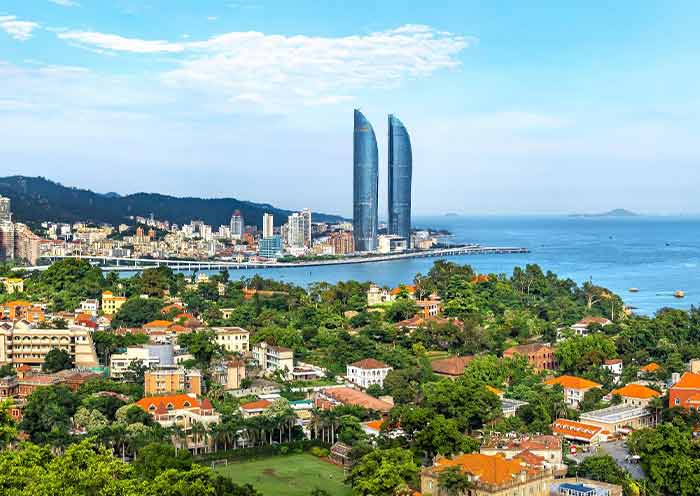
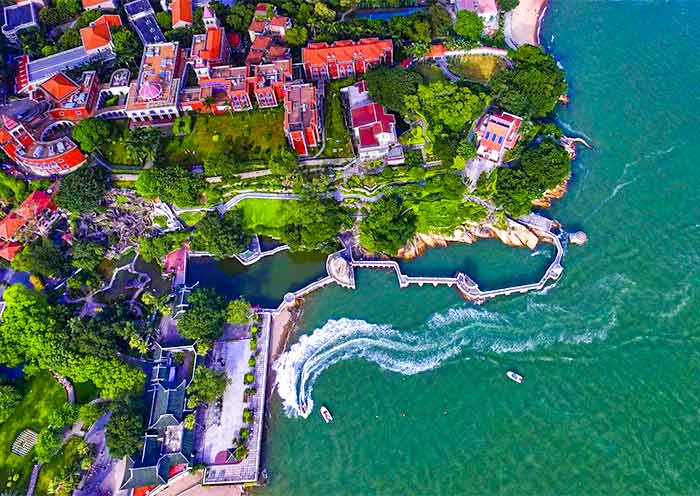
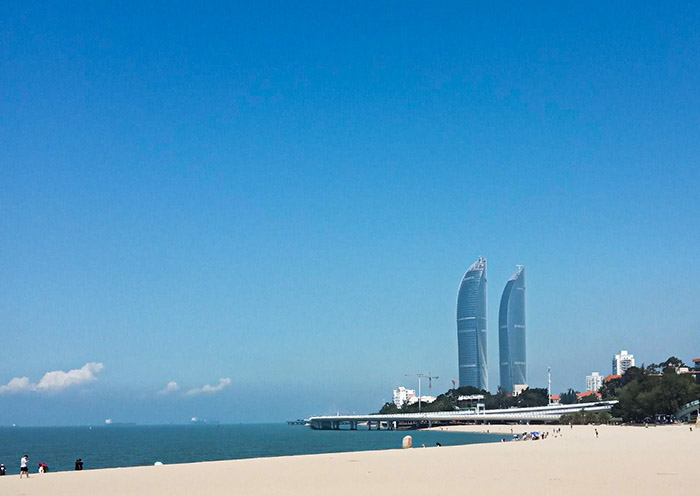
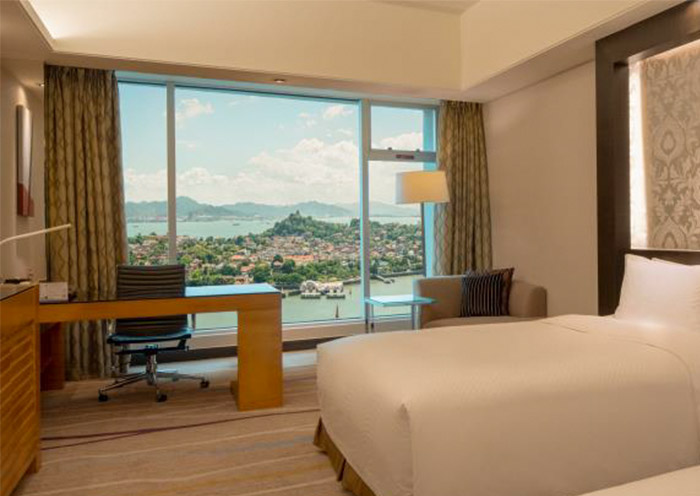
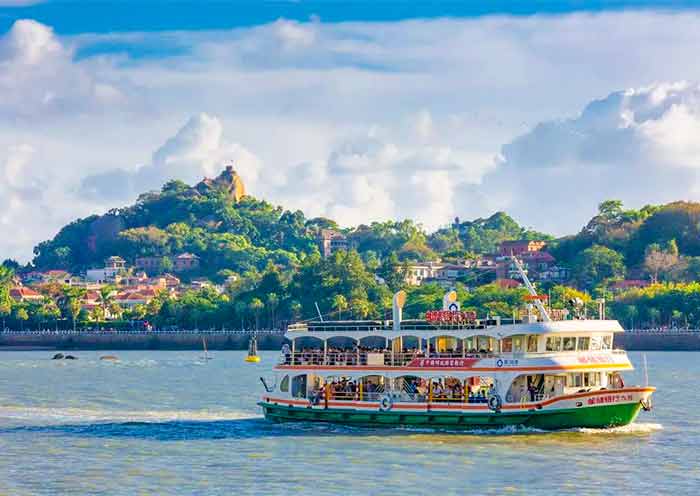

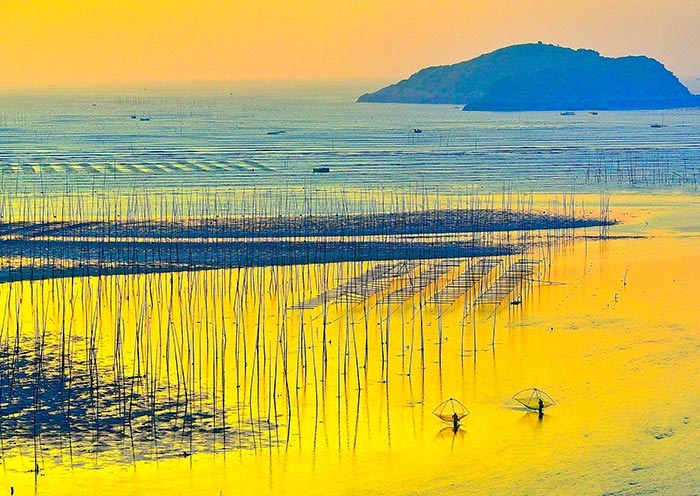
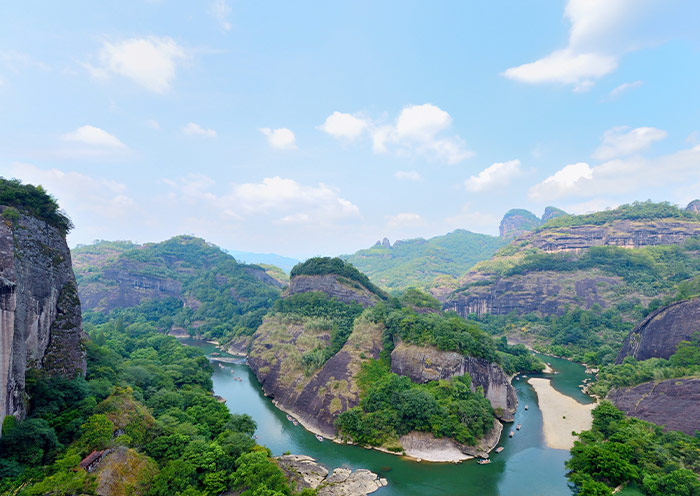
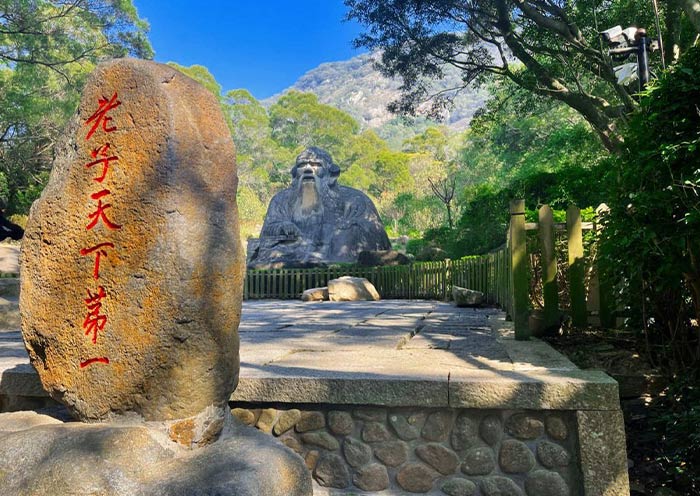
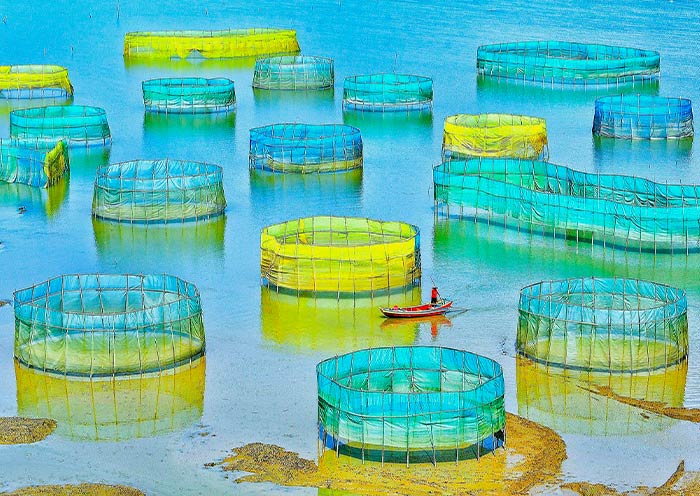
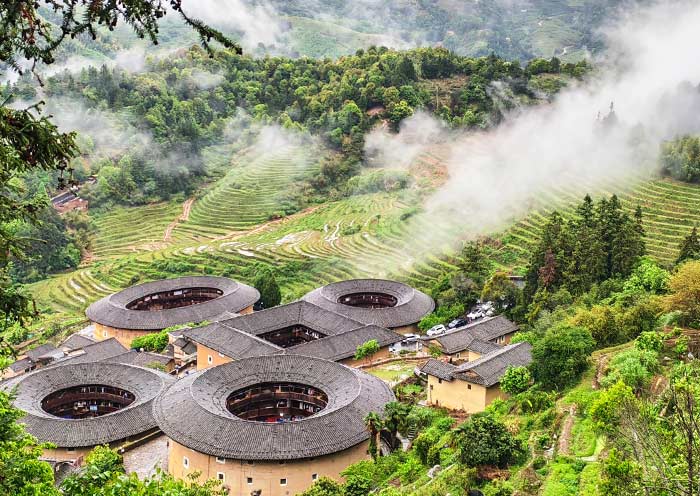
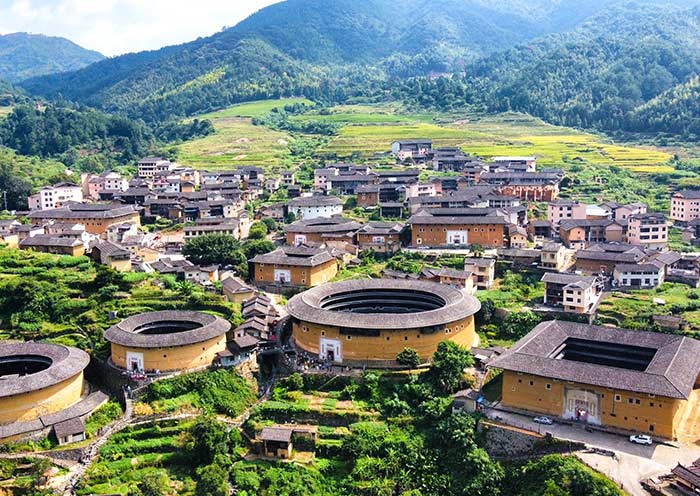
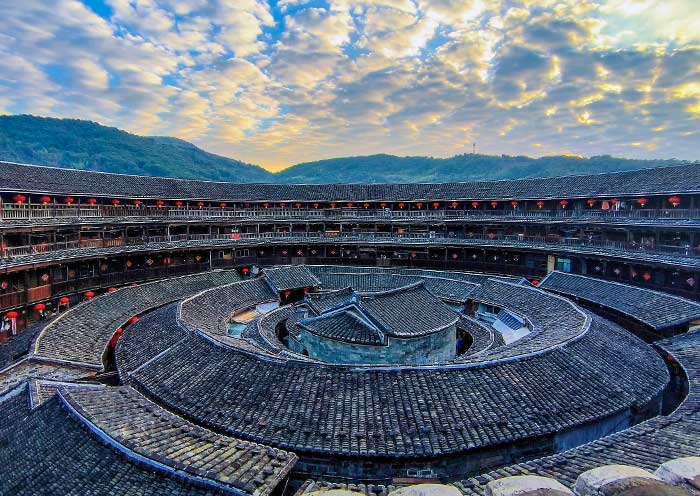
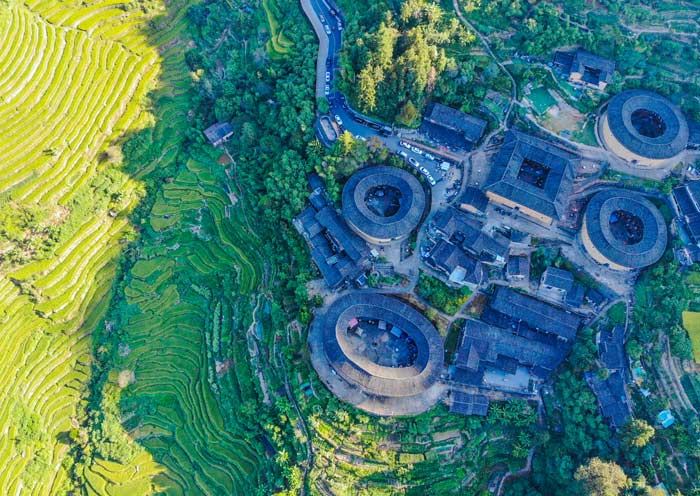
Create a tour based truly on your preferences, including all aspects of your travel in the destination